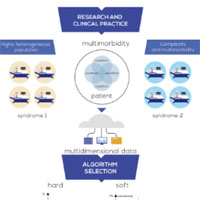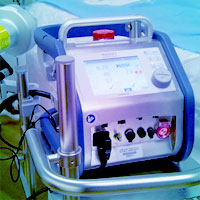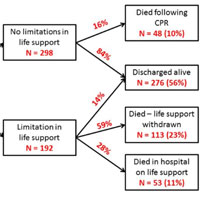
Clustering Algorithms Usage in Critical Care Research Unravel Patient Heterogeneity
Critically ill patients constitute the most heterogeneous population in the hospital, with the highest rates of acute and chronic multi-morbidity. Daily, two critically ill patients are admitted to the ICU with the same... read more

Few Ideas on How Nurses Can Recover After Difficult Shifts
Most medical professionals agree that a nursing career can be constantly stressful. It comes with the territory of caring for those who are ill and injured. On an average day, well-trained nurses are more than capable of... read more

Hemodynamic Monitoring in the ECMO Patient
Hemodynamic monitoring in extracorporeal membrane oxygenation (ECMO) patients requires familiarity with the underlying pathophysiology and circulatory mechanics of extracorporeal flow. This review discusses the various monitoring... read more

Clinical Impact and Assessment Tools Capable of Identifying Delirium in Cardiac Arrest Survivors
This review aims to describe the clinical impact and assessment tools capable of identifying delirium in cardiac arrest survivors and providing strategies aimed at preventing and treating delirium. Patient factors leading... read more

State-Mandated Protocolized Sepsis Care Associated with Decrease in Sepsis Mortality
Beginning in 2013, New York State implemented regulations mandating that hospitals implement evidence-based protocols for sepsis management, as well as report data on clinical outcomes to the state government. This study... read more

Age and Decisions to Limit Life Support for Patients with ALI
The purpose of this study was to estimate the association between patient age and the rate of new limitations in the use of life support, independent of daily organ dysfunction status, following acute lung injury (ALI) onset. 490... read more

Systemic Early Neuromuscular Blockade in ARDS – The ROSE Trial
The early use of neuromuscular blocking agents in the setting of moderate-to-severe acute respiratory distress syndrome (ARDS) was previously understood to confer a survival advantage at 90 days, based on the outcomes of... read more

Fragility Index Calculator
The fragility index is a measure of the robustness (or fragility) of the results of a clinical trial. The fragility index is a number indicating how many patients would be required to convert a trial from being statistically... read more

Fluid Resuscitation with PPD Attenuates Crush Injury-related AKI and Improves Survival
In-hospital renal replacement therapy (RRT) is widely used for the treatments of acute kidney injury (AKI) in crush injury (CI) victims. This study was designed to investigate whether preventive peritoneal dialysis (PPD)... read more

Emergency Department Hyperoxia Associated with Increased Mortality in Mechanically Ventilated Patients
Emergency Department exposure to hyperoxia is common and associated with increased mortality in mechanically ventilated patients achieving normoxia after admission. This suggests that hyperoxia in the immediate post-intubation... read more

Moving Vulnerable Patients Around Hospital Can Increase Infections
Researchers at Overlook Medical Center released a report stating that transporting patients increases the risk of hospital-acquired infections. The study focused on ICU patients being treated for strokes, aneurysm ruptures... read more

ARDS Survivors Often Leave ICU with Prolonged PICS
Patients who survive acute respiratory distress syndrome (ARDS) often leave ICU with debilitating mental, physical, or cognitive problems that may limit their quality of life. These challenges are called post-intensive care... read more

Speedy sepsis care slows in-hospital mortality
Sepsis and septic shock patients treated within 3 hours had lower in-hospital mortality rates than those treated between hours 3 and 12, based on data from nearly 50,000 adult patients. The findings were presented at an international... read more

qSOFA Performance Score as Prognostic Tool in Infected Patients Outside the ICU
A positive qSOFA score had high specificity outside the ICU in early detection of in-hospital mortality, acute organ dysfunction, and ICU admission, but low sensitivity may have limitations as a predictive tool for adverse... read more








